Wyoming Wildlife Watching & Safety Tips
Wildlife lovers flock from across the world just to witness Wyoming’s natural paradise. Hear the call of untamed wilderness beckoning? That’s the rustle of freedom as Rocky Mountain elk, bighorn sheep and bison walk the earth, reminding you that rugged adventure soars out West.
It’s no secret that spirited explorers live for our breath of fresh air—a scenic wonderland where pronghorn antelope and mule deer dance across nearly 100,000 square miles. Discover our guide to responsible wildlife watching so you can explore with confidence and learn how to safely navigate around the grizzlies, black bears and wolves. When you protect our diverse wildlife and precious resources, you’re saving irreplaceable marvels for countless visits to come. Browse our best Wyoming wildlife watching and safety tips below.
Common Wildlife Safety Tips for a Safe Experience
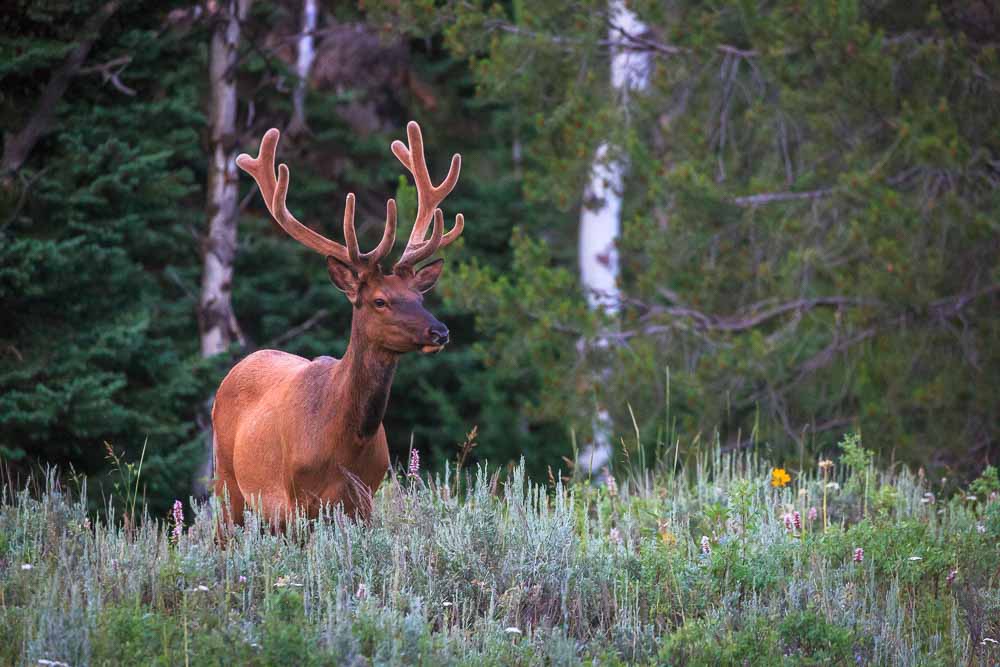
Grizzlies are as beautiful as they are powerful. They are poised to swipe their quickest claws to assert dominance—ready to defend their territory if they feel threatened. Make no mistake: if you don’t practice savvy wildlife safety tips, spectacular animals in their natural habitat can shift to dangerous wildlife in Wyoming in the blink of an eye. Here are some key guidelines to follow to experience all of the magic wildlife viewing has to offer—out of harm’s way.
Maintain a Safe Distance for Wildlife Viewing in Wyoming

Midway Geyser Basin
When engaging with wildlife in Wyoming, we must remember that we are visitors to their sacred homes. Stressing animals can hurt their ability to survive and place our own safety at risk. This is why Yellowstone and Grand Teton National Park guidelines advise remaining 100 yards from predators like grizzlies and 25 yards from other mammals like bison or elk. In cases where wildlife winds its way closer to us than anticipated, it is just as crucial to keep that safe distance. Next time you find yourself stuck in a bison jam on the road (a classic pastime in Yellowstone), please stay inside your vehicle for your own safety.
The wide-open landscapes of Wyoming offer incredible opportunities to view wildlife with a sleek set of binoculars or a spotting scope. These types of optics allow us to view wildlife from afar to better observe their natural behaviors. While touring Grand Teton and Yellowstone national parks, we prefer adaptors at EcoTour Adventures, snapping live video footage and photos through brilliant optics.
Pro Tip: Photography enthusiasts will need telephoto lenses to capture images from afar; we recommend at least 400mm of zoom, and don’t forget to crop in while editing.
How to Spot & Respect Dangerous Animals in Wyoming
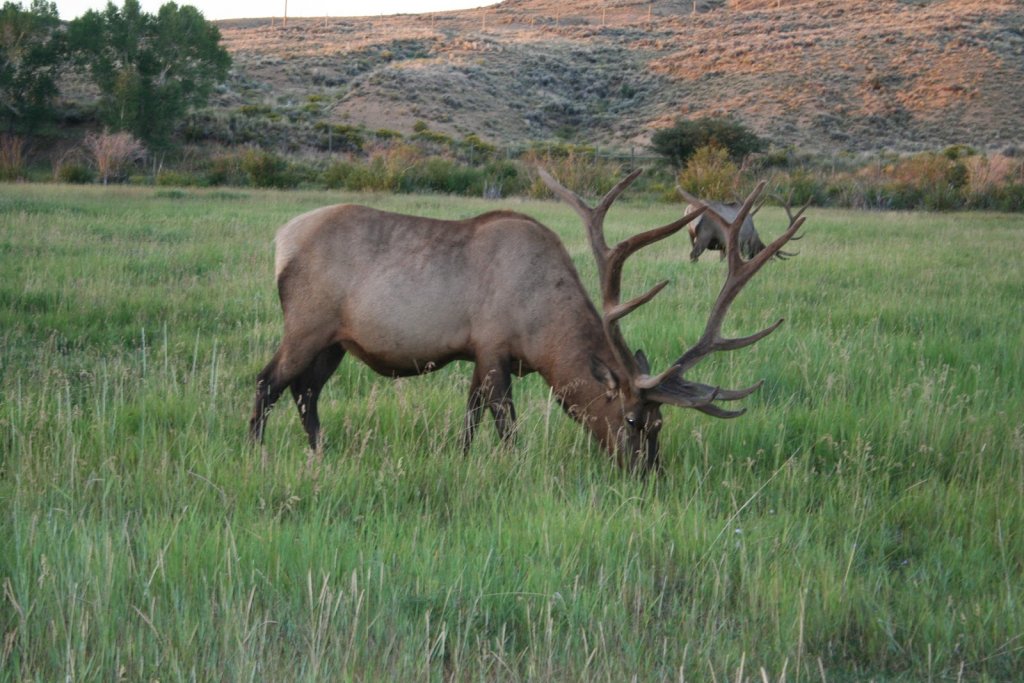
Staying informed and well-prepared is essential when interacting with dangerous wildlife in Wyoming. Become a strategic observer, and you can learn to recognize rocks that have been flipped over or scratches etching nearby habitats. Master the art of nature’s instincts so that when you see an animal posturing defensively, you’ll be at a safe distance to protect all living beings in sight.
Recognizing Signs of Threatening Behaviors
Knowing how to practice mindful wildlife viewing calls for vigilant attention and awareness of your surroundings. If a bear starts huffing or growling at you, consider that animal in predator mode. Rutting season means love is in the air for elk on the ground, but this also means they’re on the lookout to ward off rivals. If you see a bull (a male elk) starting to paw at the earth beneath you while curling its lips, that sound of a sharp bugle call is a sign to back away.
Respecting Wildlife Boundaries: Safe Viewing and Why Not to Feed Animals
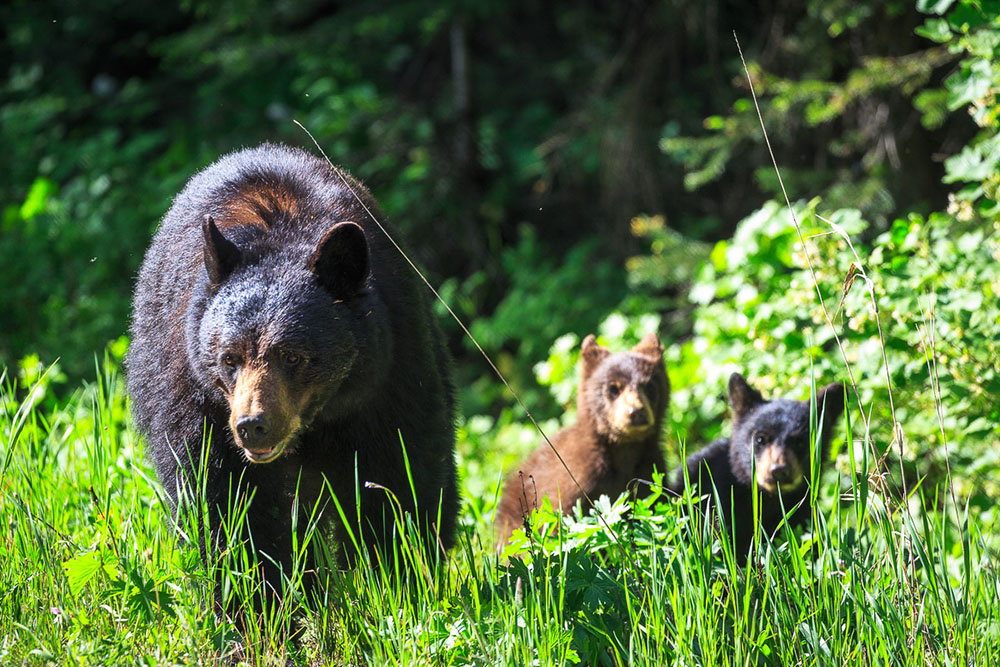
Did you know that as recently as the 1970s, bears and other animals were routinely fed in Yellowstone National Park? This practice was phased out due to the danger it posed to both animals and people. We are not meant to be giving the most dangerous animals in Wyoming snacks for the road. These surprise encounters can lead to untold risks, especially with protective mother grizzly bears lingering on the grounds.
Today, we work hard to avoid food conditioning bears and other animals so they don’t seek food rewards from people. Bears that are fed can become more dangerous to people. It’s so unfortunate that they are often removed because of this. The best way to help us keep bears and other animals wild is to resist that urge to feed them. This includes properly disposing of waste and always storing food in a locked vehicle with windows rolled up, in a bear canister or in a bear box. A fed bear is a dead bear walking.
Bear Safety Tips in Wyoming
Keep your eyes peeled toward the trees, where you may find some black bears climbing up, seeking refuge or devouring an omnivore’s buffet of fruits and nuts. Meanwhile, watch out for a territorial grizzly, who might come charging right at you if they feel threatened to defend their home.
Want to minimize the likelihood of a tense bear encounter? We recommend avoiding hiking at dawn or dusk, right when bears most like to come out, aiming to sidestep the sweltering afternoon heat.
Make noise whenever you’re hiking so bears won’t feel caught off guard. Never let fear jolt you into running, or a bear will see you as prey and give in to the thrill of the chase. Stay calm, stand your ground and slowly back away while softly speaking, asserting your presence in a nonthreatening way. In the case of a bear, slow and steady wins the race.
Things You Should Know: Wyoming is home to both black bears and grizzly bears. While black bears live throughout the state, grizzlies are mainly found in the northwest corner of Wyoming. Taking steps to avoid a negative encounter is especially important when traveling in grizzly country.
Bison Safety Tips in Wyoming
Did you catch a bison raising its tail mid-twitch? This is your tell-tale sign: that wild animal is feeling all sorts of agitated. The National Park Service encourages any wildlife viewing enthusiast to keep about 25 yards between you and any wandering bison to give yourself a protective buffer. If you find yourself too close to a curious bison, again, the last thing you want to do is run. Distance here is your best friend.
Channel your inner zen mentality as you lock calm eyes with that bison, holding visual contact as you slowly put distance between you. Find a large barrier (for instance, on the fly, a tree makes for a timely resource) for extra protection as you inch backward to safety.
General Animal Safety Tips in Wyoming
An easy way to ensure Wyoming wildlife safety throughout your travels: stay on designated trails, carefully marked for smooth navigation. Venturing off-trail not only disturbs natural habitats in all their genuine glory, but you then run the risk of threatening wild animals that, if frazzled, pose unwanted danger to you.
The best way to approach the wildlife here is to remember your role as an observer. Not only is it harmful to feed animals in the Wyoming wild, but it’s also prohibited. If you really want to help the wildlife, let the animals thrive in their element, digesting the nutrients they’re meant to find with their inherent survival skills.
Ethical wildlife viewing means leaving no trace—respecting these one-of-a-kind surroundings as if you’re a human ghost and leaving no trash or food behind. Stand clear from moving around any pieces of this special habitat. If you want to take a souvenir, let it be the memory of the experience.
Listen and Enjoy the Sounds of Nature
With only around 560,000 people, Wyoming is the least populated state in the country. That means it’s easy for the sounds of civilization to fade away when you adventure here.
Take advantage of this rare opportunity to enjoy our beautiful outdoor spaces without speakers or headphones, savoring the sparkling soundtrack of nature in all of its splendor. We highly recommend this wildlife watching tip, for there’s nothing quite like the melody of elk bugling in the fall, the eerie call of a Swainson’s thrush in conifer forests or the enchanting howl of wolves glowing across Yellowstone’s Lamar Valley.
The Benefits of Group Travel for Wyoming Wildlife Safety
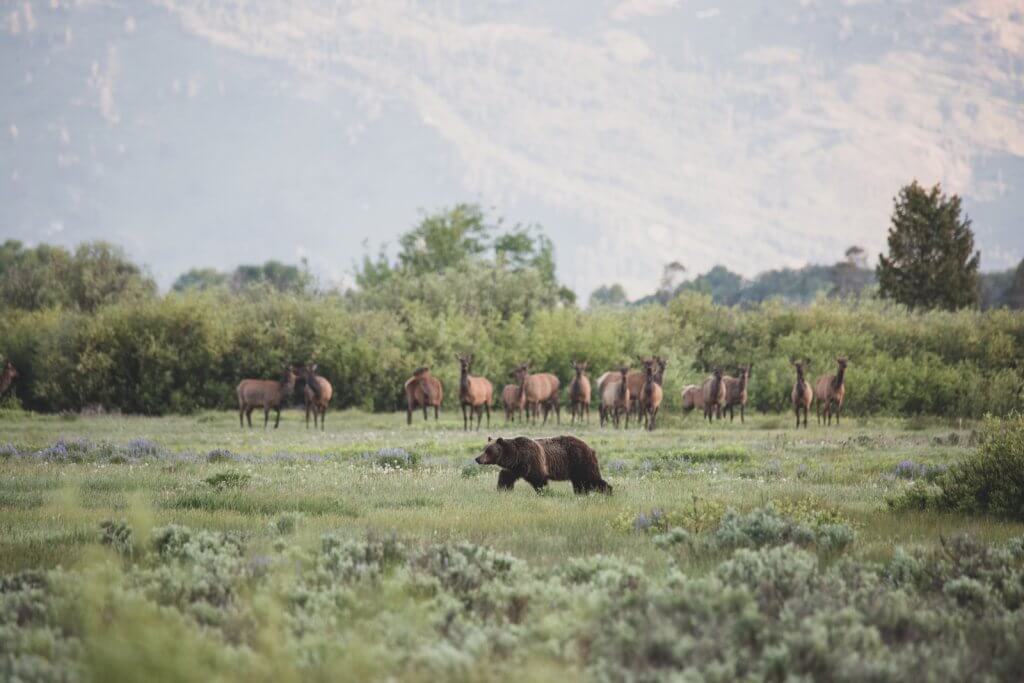
One of our top wildlife safety tips in Wyoming: roam the rugged landscape in the safety of a fun group. First, in a group, you have the benefit of more than one set of eyes on the lookout for any sudden wildlife surprises, helping you to keep a safe distance. Second, grizzlies are unlikely to attack groups of people. If you encounter one, be sure to stand next to each other so the bear can see multiple members of the party. There’s safety in numbers—you’re together in solidarity, less isolated and able to share in the joy of thrilling wildlife watching.
Things You Need To Know: Don’t run; it may provoke a chase response. Slowly back away while facing the bear even if it charges, arms raised. Bears frequently bluff charge, stopping short of their target or veering away at the last second.
Staying Alert for Wildlife Safety in Wyoming’s Great Outdoors

It’s wise to practice Wyoming wildlife safety with sound intuition, giving wildlife a “heads up” to your presence so nothing feels startling. Making noise in low visibility areas and being alert to your surroundings (like enjoying the sounds of nature instead of music) can reduce the likelihood of surprising a bear. If bears know people are nearby, they will often move away without conflict. People can also safely move around bears they observe from a distance or retreat to another location. Yellowstone and Grand Teton National Park guidelines require people to remain 100 yards from predators like grizzlies and 25 yards from other mammals such as bison or elk.
Food Storage Wildlife Safety Tips in Wyoming
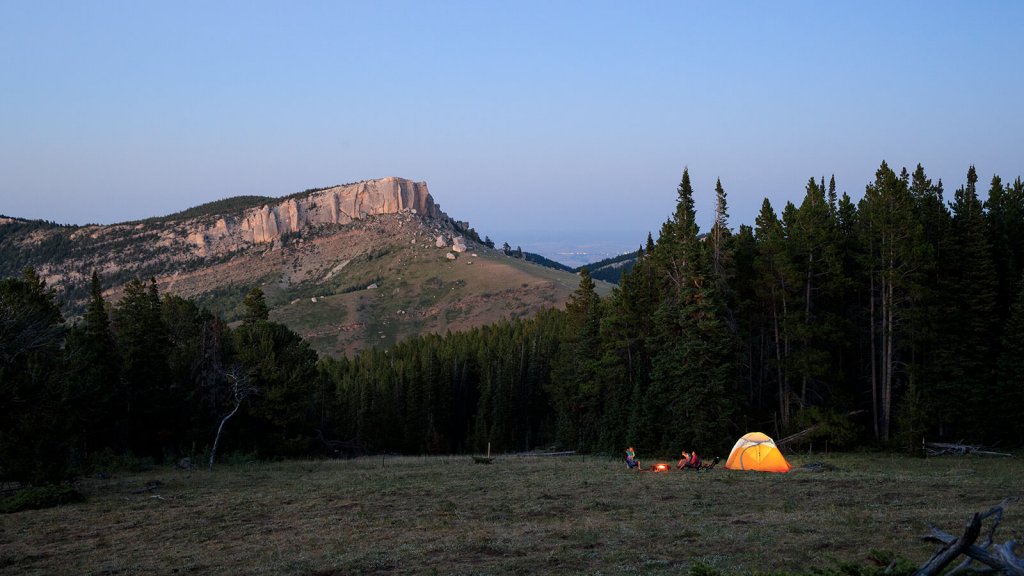
Keeping human food away from bears is key to preventing encounters in bear country. Both the National Park Service and US Forest Service require food storage in the Greater Yellowstone Ecosystem during months when bears are active. Grizzlies can smell food over a thousand yards away!
Most developed campsites have bear-resistant containers to store food and other odorous items like sunscreen and lip balm. Backpackers must carry bear-resistant canisters or hang food a yard out and three yards above the ground. Additionally, keeping a clean camp, cooking away from sleeping quarters and never storing food in tents will help prevent bears from entering camping areas.
Pro Tip: In addition to properly sealing and placing your food in tightly closed containers, make sure you don’t forget to put away any leftover cooking utensils. Be cautious when using insect repellent, which may ward off unwanted bugs but could beckon a bear over to your campsite.
Outdoor Wildlife Safety Essentials: Knowing How to Use Bear Spray in Wyoming
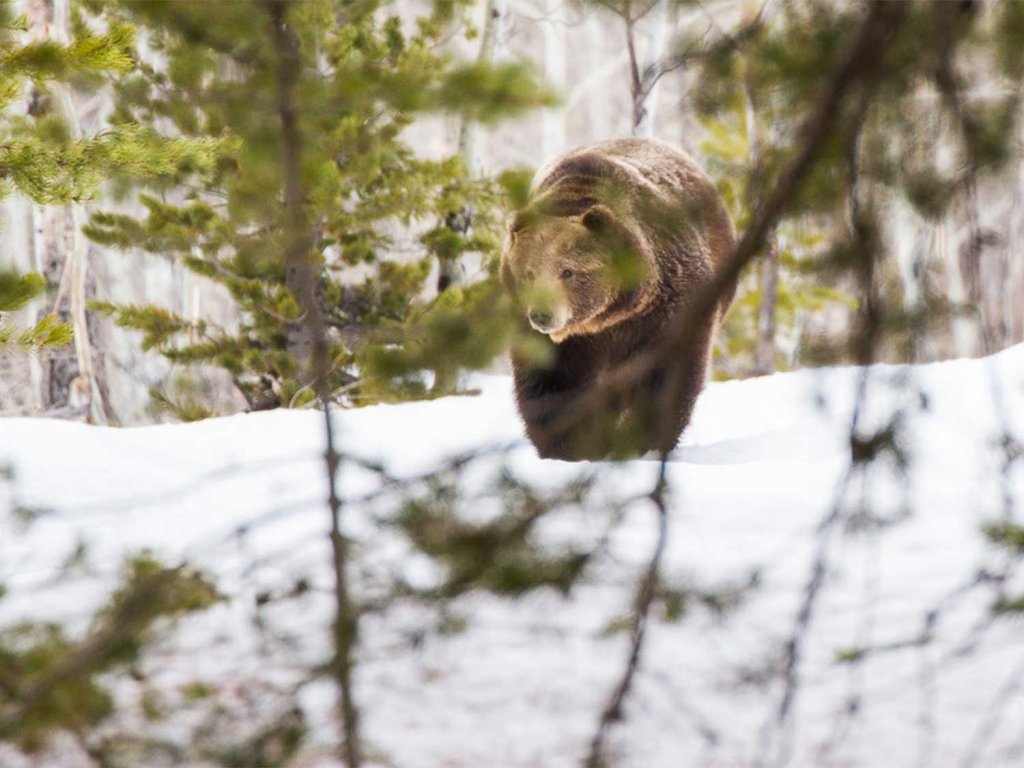
We always recommend carrying bear spray made of capsaicin powder, the active ingredient in chili peppers. Bears have extremely sensitive mucus membranes, so if one is charging right at you, spray into its eyes, nose and mouth. Research has shown bear spray is up to 98 percent effective when used properly. In contrast, research currently in the press by bear biologist Tom Smith found that 40 percent of people who use firearms to defend against bears are injured or killed.
Another key Wyoming wildlife safety tip to add to your belt: make your bear spray accessible. Place it on your belt at your hip or just a tug away on your backpack strap (not hidden away) so you can pull it immediately from your chest. Remove the safety clip, hold the spray with both hands and angle the nozzle right at the bear that has approached within range. Your goal: create a cloud of protection so a bear must walk through a barrier of peppery mist before it can reach you. In your group, carry multiple cans of bear spray. That way, each of you is poised to grip a canister quickly.
Avoid traveling with bear spray in a hot car or finding out you have to throw it out at a TSA checkpoint before you reach Yellowstone. Learn more about resources for bear spray rental through Bear Aware, a valuable resource to ensure better hiking safety.
Wyoming Wildlife Safety Laws and Regulations
Ahead of your next gleaming outdoor adventure, we recommend becoming familiar with Wyoming’s wildlife safety laws and regulations, carefully established by the Wyoming Game and Fish Department (WGFD). To protect our incredible wildlife population, follow our specially designated hunting seasons and bag limits, whether you’re seeking out mountain goats or waterfowl.
Remember to ensure all necessary licenses and permits are in place, prioritizing ethical and responsible hunting practices. From observing legal shooting hours to respecting caliber restrictions, each regulation plays a vital role in cultivating a safe and humane atmosphere for all.
We’re fortunate to share Wyoming’s wild landscapes with a diverse assortment of North American wildlife. We hope you take these tips for safe and fun wildlife watching in Wyoming and run with them (like a wild antelope). WY Responsibly when you visit and make dazzling memories you’ll never forget. We look forward to seeing you!
The post Wyoming Wildlife Safety Tips appeared first on Travel Wyoming.
This article: Wyoming Wildlife Safety Tips has been curated from our friends at Travel Wyoming and the original in it's entirety can be found here: https://travelwyoming.com/article/wyoming-wildlife-watching-safety-tips/





